
Kotor Bay: Montenegro's Hidden Gem
Explore the enchanting Kotor Bay in Montenegro, where stunning landscapes, rich history, and outdoor adventures await in this Adriatic gem.
Kotor Bay, nestled in Montenegro's Adriatic coast, is a breathtaking destination that seamlessly blends natural beauty with rich history. The bay is surrounded by dramatic mountains and dotted with charming medieval towns, making it a picturesque haven for travelers seeking both relaxation and adventure. The town of Kotor, a UNESCO World Heritage site, is the crown jewel of the bay. Its well-preserved old town is a labyrinth of narrow streets, ancient churches, and quaint squares that transport you back in time. Climbing the city walls rewards visitors with stunning panoramic views of the bay and the surrounding mountains. Kotor Bay is also a paradise for outdoor enthusiasts. From kayaking and sailing on its crystal-clear waters to hiking the nearby mountains, there is no shortage of activities to keep you engaged. The nearby villages of Perast and Risan offer additional historical insights and tranquil settings, perfect for a relaxing day trip. Whether you're a history buff, nature lover, or simply looking for a serene escape, Kotor Bay in Montenegro promises an unforgettable experience.
Local tips in Kotor Bay
- Visit early morning or late afternoon to avoid the crowds and enjoy the peaceful atmosphere.
- Wear comfortable shoes for exploring the old town and climbing the city walls.
- Try local seafood dishes at waterfront restaurants for an authentic culinary experience.
- Consider a boat tour to explore the bay's hidden coves and nearby islands.
- Bring a camera or smartphone with a good camera to capture the stunning scenery.
Kotor Bay: Montenegro's Hidden Gem
Kotor Bay, nestled in Montenegro's Adriatic coast, is a breathtaking destination that seamlessly blends natural beauty with rich history. The bay is surrounded by dramatic mountains and dotted with charming medieval towns, making it a picturesque haven for travelers seeking both relaxation and adventure. The town of Kotor, a UNESCO World Heritage site, is the crown jewel of the bay. Its well-preserved old town is a labyrinth of narrow streets, ancient churches, and quaint squares that transport you back in time. Climbing the city walls rewards visitors with stunning panoramic views of the bay and the surrounding mountains. Kotor Bay is also a paradise for outdoor enthusiasts. From kayaking and sailing on its crystal-clear waters to hiking the nearby mountains, there is no shortage of activities to keep you engaged. The nearby villages of Perast and Risan offer additional historical insights and tranquil settings, perfect for a relaxing day trip. Whether you're a history buff, nature lover, or simply looking for a serene escape, Kotor Bay in Montenegro promises an unforgettable experience.
When is the best time to go to Kotor Bay?
Iconic landmarks you can’t miss
Kampana Tower
Explore the historic Kampana Tower in Kotor, Montenegro, and enjoy breathtaking views of the bay and ancient city.

Lovćen National Park
Discover the breathtaking landscapes and rich history of Lovćen National Park in Montenegro, a paradise for nature lovers and adventure seekers.

Kotor Fortress
Discover the breathtaking views and rich history at Kotor Fortress, a majestic landmark overlooking the stunning Kotor Bay and Old Town.

Kotor beach
Explore the stunning Kotor Beach in Dobrota, Montenegro, where crystal-clear waters meet breathtaking mountain views for a perfect coastal escape.

St. Tryphon's Cathedral
Discover the beauty and history of St. Tryphon's Cathedral, a Romanesque gem in Kotor, Montenegro, showcasing stunning architecture and rich cultural heritage.

Kotor Serpentine
Explore the breathtaking Kotor Serpentine, a winding road offering stunning views of the Bay of Kotor and historical treasures in Montenegro.

San Giovanni
Discover St. John Fortress, a historical landmark with breathtaking views of Kotor Bay, where history and natural beauty converge.

Kotor Old City Walls
Explore the ancient Kotor Old City Walls, a UNESCO World Heritage site, offering stunning views and rich history in the heart of Montenegro.

Port of Kotor
Discover the stunning Port of Kotor, where breathtaking landscapes meet rich cultural heritage in the heart of Montenegro.

Kotor Cats Museum
Discover the charming Kotor Cats Museum, a delightful tribute to the bond between humans and cats, located in the historic heart of Kotor, Montenegro.

Best View of Kotor
Discover the enchanting vistas of Kotor and Tivat Bay from the Best View of Kotor, an essential stop for every traveler in Montenegro.

Sea Gate
Discover the enchanting Sea Gate in Kotor, a stunning historical landmark that welcomes you to Montenegro's captivating Old Town.

Kotor Cable Car
Discover breathtaking views from the Kotor Cable Car, a must-visit attraction in Montenegro offering stunning perspectives of the Bay of Kotor.

Pescaria Dekaderon
Experience authentic Montenegrin seafood in a picturesque setting at Pescaria Dekaderon in Kotor, where flavors meet stunning views.

Old Town Road
Explore the historic Old Town Road in Kotor, a captivating journey through stunning architecture and breathtaking views of the Adriatic coast.

Unmissable attractions to see
Port of Kotor
Explore the stunning landscapes and rich history at the Port of Kotor, a captivating destination in Montenegro's breathtaking Bay of Kotor.

Bajova Kula
Experience the fresh flavors of Montenegro at Bajova Kula, a seafood restaurant offering stunning views and a delightful culinary journey.

VOLI
Discover the vibrant Voli supermarket in Tivat, Montenegro, your ideal stop for local specialties, fresh produce, and convenient beach essentials.

Perast Beach
Discover the hidden beauty of Perast Beach, a serene destination in Montenegro renowned for its crystal-clear waters, historic charm, and breathtaking landscapes.
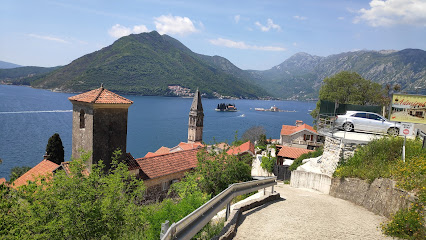
Kojan Koral
Discover the thrill of outdoor adventure at Kojan Koral in Gruda, offering ATV rentals, horseback riding, and unforgettable experiences in stunning landscapes.

Naval Beacon
Explore the iconic Naval Beacon of Montenegro, a stunning architectural gem overlooking the serene waters of the Bay of Kotor, rich in history and beauty.

Perast Museum
Explore the rich maritime history and captivating artifacts at Perast Museum, a must-visit attraction in picturesque Perast, Montenegro.

Perast
Explore the enchanting Perast, a picturesque coastal town in Montenegro known for its stunning Baroque architecture and breathtaking Adriatic views.

Bronza Palace
Explore the exquisite Bronza Palace, a historical gem in Perast, Montenegro, offering stunning views and rich cultural heritage in the Bay of Kotor.

Viskovic Palace
Explore Viskovic Palace in Perast, Montenegro - a historical landmark that showcases exquisite Baroque architecture and the region's rich maritime heritage.

Former Submarine Tunnel
Explore the Former Submarine Tunnel in Kumbor, Montenegro, where history and stunning coastal views unite for an unforgettable adventure.
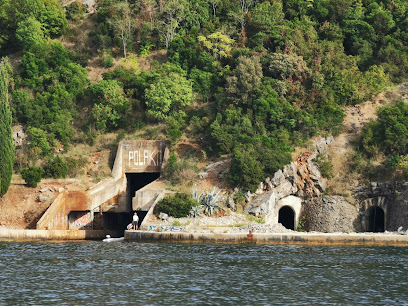
Lipci Prehistoric Drawings
Explore the ancient Lipci Prehistoric Drawings in Montenegro, where art and nature intertwine to tell the story of humanity's distant past.
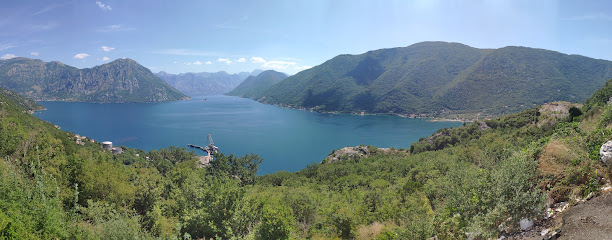
Njegoševa Rodna Kuća
Explore the rich heritage of Montenegro at Njegoš's Birthplace, a cultural gem honoring the legacy of a beloved poet and national hero.

Vrmac
Discover the breathtaking beauty of Vrmac in Gornja Lastva, Montenegro—an ideal destination for nature lovers and adventure seekers.

The Seagull Speed Boat Tours
Discover the stunning Adriatic coastline on The Seagull Speed Boat Tours, where adventure and breathtaking views await every tourist in Montenegro.

Essential places to dine
BBQ Tanjga
Experience authentic Montenegrin barbecue at BBQ Tanjga in Kotor – where flavorful grilled dishes meet stunning views.

La Catedral Pasta Bar
Experience authentic Italian cuisine at La Catedral Pasta Bar in Kotor - where every pasta dish tells a story.
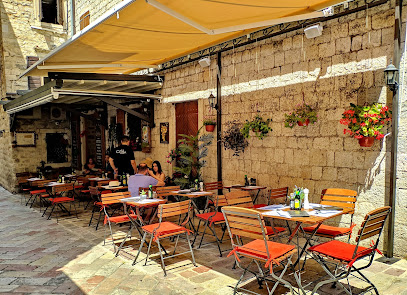
Restaurant City
Discover Restaurant City in Kotor: A family-friendly haven offering delectable local and international cuisine amidst stunning views.

Konoba Scala Santa
Experience authentic Montenegrin cuisine at Konoba Scala Santa, where breathtaking views meet exquisite flavors in the heart of Kotor.
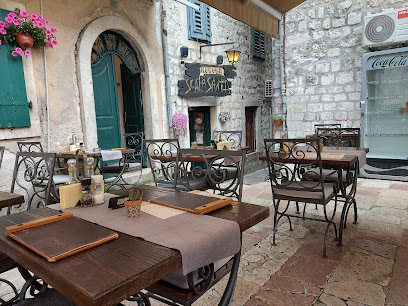
Marenda Steak House
Experience exquisite steaks and authentic Montenegrin hospitality at Marenda Steak House in Skaljari.

Tiha Noć Restaurant - Kotor
Experience exquisite Turkish, Mexican & seafood cuisine with stunning views at Tiha Noć Restaurant on Kotor Bay.

Ladovina Kitchen & Wine Bar
Experience authentic Montenegrin cuisine and fine wines at Ladovina Kitchen & Wine Bar in Kotor.
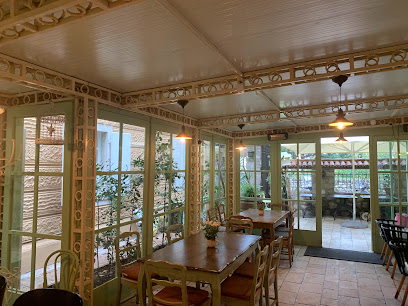
Restoran Cesarica
Discover authentic Montenegrin flavors at Restoran Cesarica in Kotor's historic Old Town—a culinary haven amidst breathtaking scenery.

Restaurant PRŽUN
Experience authentic Montenegrin flavors at Restaurant PRŽUN in Kotor - where barbecue meets seafood in a charming setting.

Konoba Akustik
Experience exquisite seafood dining at Konoba Akustik by Kotor's scenic bay—where local flavors meet stunning views.

Konoba Roma
Experience authentic Montenegrin cuisine at Konoba Roma in Kotor - where tradition meets taste.

Restaurant Galion
Experience exquisite Mediterranean cuisine with stunning views at Restaurant Galion in Kotor, Montenegro.

Ombra Restaurant
Experience exquisite flavors at Ombra Restaurant in Kotor – where organic meets tradition in a charming Mediterranean setting.
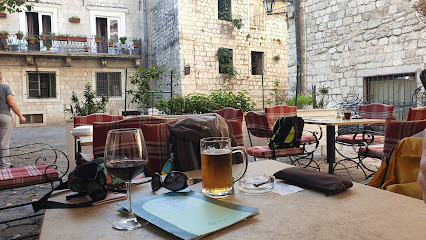
Pescaria Dekaderon
Discover exquisite seafood at Pescaria Dekaderon in Kotor – where local flavors meet stunning coastal views.

Cesare Old Town Restaurant
Experience authentic Montenegrin cuisine at Cesare Old Town Restaurant in Kotor’s stunning historical center.

Markets, malls and hidden boutiques
Shopping Centre Kamelija
Discover the vibrant Shopping Centre Kamelija in Kotor, Montenegro - a perfect blend of modern retail and local culture awaits you.

Kotor Old City Walls
Discover the historic Kotor Old City Walls, an architectural marvel offering stunning views of Montenegro's breathtaking landscapes.

HDL Novi Mall
Explore HDL Novi Mall, Sutorina's premier shopping destination, combining modern retail with a taste of local culture for an unforgettable experience.

Butiko Shopping Center
Discover a world of shopping and culinary delights at Butiko Shopping Center, Montenegro's premier retail destination offering something for everyone.

iDEA
Explore Kotor's iDEA supermarket for a unique shopping experience, offering local delights and essentials amidst breathtaking Montenegrin scenery.

Cats Of Kotor
Explore the whimsical world of Cats Of Kotor, where unique handmade souvenirs and the spirit of Kotor's feline friends come together.

Hard Rock Cafe - Souvenir Rock Shop
Uncover the spirit of rock and roll at the Hard Rock Cafe Souvenir Rock Shop in Kotor, offering unique apparel, memorabilia, and local treasures.

Kotorska Suvenirnica
Explore Kotorska Suvenirnica in Kotor for unique Montenegrin souvenirs, from local crafts to handmade art pieces that capture the spirit of the region.

Souvenir Shop Montenegro
Discover unique handcrafted souvenirs and local delicacies at Souvenir Shop Montenegro in the heart of Kotor, a must-visit for every traveler.

Luxury Shopping Center
Explore Kotor's Luxury Shopping Center – A Fusion of High-End Retail and Historic Charm in Montenegro's Old Town.

INTERSPORT Kotor
Explore the ultimate destination for sports enthusiasts at INTERSPORT Kotor, where quality meets adventure in the heart of Montenegro.

Yacht & Home Montenegro
Explore Yacht & Home Montenegro - your ultimate marine supply destination in Tivat for all your nautical adventures.

Kotor Souvenir
Discover authentic Montenegrin souvenirs at Kotor Souvenir, where each piece tells a story of the stunning Kotor Bay region.
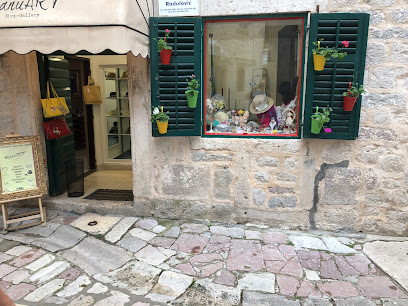
Sungun Souvenir Shop
Explore the heart of Kotor with unique souvenirs, handcrafted gifts, and local artistry at Sungun Souvenir Shop.

MOOI
Explore MOOI Boutique in Porto Montenegro - where luxury meets local fashion in a stunning waterfront setting.

Essential bars & hidden hideouts
The Nitrox Pub & Eatery
Experience the vibrant nightlife of Kotor at The Nitrox Pub & Eatery, your go-to spot for cocktails, local beers, and delicious food.
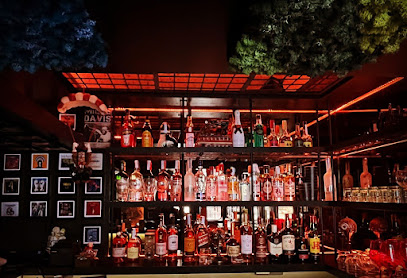
The Square Pub
Experience the flavors of Montenegro at The Square Pub, a charming restaurant in Kotor known for its local dishes and inviting atmosphere.
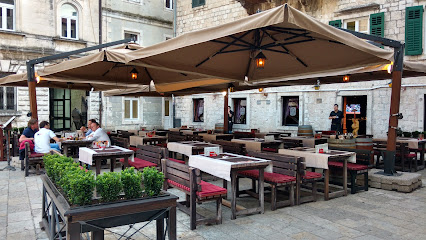
Ombra Restaurant
Experience the best of Kotor's culinary scene at Ombra Restaurant, where organic ingredients meet diverse flavors in a charming atmosphere.

Jazz Club Evergreen
Discover the vibrant jazz scene at Jazz Club Evergreen in Kotor, Montenegro, where live music and a cozy atmosphere create unforgettable nights.

Lav Gastro Bar
Experience the flavors of Mediterranean cuisine at Lav Gastro Bar in Kotor, where every meal is a delightful journey through Montenegrin culture.

Old Winery Wine Bar
Experience the charm of Kotor at the Old Winery Wine Bar, where local wines and delicious cuisine meet stunning views.

The Harbour Pub
Experience the vibrant atmosphere and local charm at The Harbour Pub in Kotor, where stunning views meet delightful drinks and delicious bites.

Letrika Caffe Bar
Experience Kotor's vibrant nightlife at Letrika Caffe Bar, a cozy spot in the heart of the Old Town with delightful drinks and local charm.

Mandrać (Otvoreni Šank)
Discover Mandrać (Otvoreni Šank) in Dobrota – a cozy bar offering delightful drinks and stunning Adriatic views.
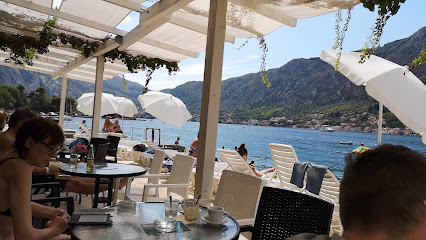
Oskar Beach Bar
Experience the best of Montenegro at Oskar Beach Bar, where stunning sea views and refreshing drinks await you.

Klub Invalida
Experience the vibrant nightlife at Klub Invalida, Kotor's charming bar offering local drinks, live music, and an inviting atmosphere.

PUB AS
Discover PUB AS in Kotor: A lively pub offering local drinks, vibrant atmosphere, and breathtaking views in Montenegro’s historic heart.

Caffe bar Perper
Experience the charm of Kotor at Caffe Bar Perper, where drinks, local culture, and a cozy atmosphere come together.

Виноград Котор
Experience the finest wines and local flavors at Виноград Котор, a delightful wine bar in the historic heart of Kotor, Montenegro.

Bianco Beach Bar
Experience the perfect blend of relaxation and culinary delights at Bianco Beach Bar in Dobrota, Montenegro, with picturesque views and a vibrant atmosphere.

Local Phrases about Kotor Bay
-
- HelloZdravo
[ZDRAH-voh] - GoodbyeDoviđenja
[doh-VEE-jen-ya] - YesDa
[dah] - NoNe
[neh] - Please/You're welcomeMolim te
[MOH-leem teh] - Thank youHvala
[HVAH-lah] - Excuse me/SorryIzvinite
[eez-VEE-nee-teh] - How are you?Kako si?
[KAH-koh see] - Fine. And you?Dobro. A ti?
[DOH-bro. ah tee] - Do you speak English?Govorite li engleski?
[go-VOH-ree-teh lee ENG-lehs-kee] - I don't understandNe razumijem
[neh rah-ZOO-mee-yem]
- HelloZdravo
-
- I'd like to see the menu, pleaseMogu li da vidim meni, molim vas
[MOH-goo lee dah VEE-deem MEH-nee, MOH-leem vahs] - I don't eat meatJa ne jedem meso
[yah neh YEH-dem MEH-soh] - Cheers!Živjeli!
[ZHEEV-yeh-lee] - I would like to pay, pleaseŽelim da platim, molim vas
[ZHEH-leem dah PLAH-teem, MOH-leem vahs]
- I'd like to see the menu, pleaseMogu li da vidim meni, molim vas
-
- Help!Upomoć!
[OO-poh-mohtch] - Go away!Idite odavde!
[EE-deh-teh oh-DAHV-deh] - Call the Police!Pozovite policiju!
[POH-zoh-vee-teh poh-lee-TSEE-yoo] - Call a doctor!Pozovite doktora!
[POH-zoh-vee-teh DOHK-toh-rah] - I'm lostIzgubio/la sam se
[eez-GOO-byoh/lah sahm seh] - I'm illBolestan/na sam
[BOH-leh-stahn/nah sahm]
- Help!Upomoć!
-
- I'd like to buy...Želim da kupim...
[ZHEH-leem dah KOO-peem...] - I'm just lookingSamo gledam
[SAH-moh GLEH-dahm] - How much is it?Koliko košta?
[KOH-lee-koh KOSH-tah] - That's too expensiveTo je previše skupo
[toh yeh PREH-vee-sheh SKOO-poh] - Can you lower the price?Možete li spustiti cijenu?
[MOH-zheh-teh lee SPOO-stee-tee TSEE-yeh-noo]
- I'd like to buy...Želim da kupim...
-
- What time is it?Koliko je sati?
[KOH-lee-koh yeh SAH-tee] - It's one o'clockJedan je sat
[YEH-dahn yeh saht] - Half past (10)Pola (deset)
[POH-lah (DEH-seht)] - MorningJutro
[YOO-troh] - AfternoonPopodne
[POH-pohd-neh] - EveningVeče
[VEH-cheh] - YesterdayJuče
[YOO-cheh] - TodayDanas
[DAH-nahs] - TomorrowSutra
[SOO-trah] - 1Jedan
[YEH-dahn] - 2Dva
[dvah] - 3Tri
[tree] - 4Četiri
[CHEH-tee-ree] - 5Pet
[peht] - 6Šest
[shest] - 7Sedam
[SEH-dahm] - 8Osam
[OH-sahm] - 9Devet
[DEH-veht] - 10Deset
[DEH-seht]
- What time is it?Koliko je sati?
-
- Where's a/the...?Gdje je...?
[gd-yeh yeh] - What's the address?Koja je adresa?
[KOH-yah yeh ah-DREH-sah] - Can you show me (on the map)?Možete li mi pokazati (na mapi)?
[MOH-zheh-teh lee mee poh-KAH-zah-tee (nah MAH-pee)] - When's the next (bus)?Kada je sledeći (autobus)?
[KAH-dah yeh SLEH-deh-chee (OW-toh-boos)] - A ticket (to ....)Jednu kartu (do ....)
[YEH-dnoo KAHR-too (doh ....)]
- Where's a/the...?Gdje je...?
History of Kotor Bay
-
Kotor Bay's history dates back to ancient times, with evidence of Illyrian tribes settling in the region as early as the 5th century BC. The bay's strategic importance made it a coveted location, and it later became a part of the Roman Empire around the 2nd century BC. Roman influence is still visible in the ruins and artifacts found throughout the area.
-
During the medieval period, Kotor Bay became an important hub for trade and defense. The town of Kotor, nestled at the base of the bay, was fortified with impressive walls that still stand today. These fortifications were expanded significantly during the 9th and 10th centuries to protect against invaders, including the Byzantine Empire and later the Ottoman Turks.
-
In the 15th century, Kotor Bay came under the control of the Republic of Venice. This period, which lasted until the end of the 18th century, left a lasting imprint on the region. Venetian architecture, including the stunning palaces and churches, still dominates the landscape. The Venetian influence also extended to culture, art, and commerce, turning Kotor into a thriving maritime center.
-
The early 19th century brought significant changes to Kotor Bay with the arrival of Napoleon's forces. In 1806, Kotor was briefly part of the French Empire, following the Treaty of Tilsit. This period was short-lived, but it brought administrative and social reforms that had lasting effects on the region's governance and infrastructure.
-
After the fall of Napoleon, Kotor Bay became part of the Austro-Hungarian Empire in 1815. This era saw the modernization of the area, with significant investments in infrastructure, including the construction of roads, schools, and hospitals. The Austro-Hungarian influence is still evident in the region's architecture and urban planning.
-
The tumultuous 20th century saw Kotor Bay impacted by both World Wars. During World War I, the bay was a strategic naval base for the Austro-Hungarian Navy. In World War II, it was occupied by Italian and German forces. After the war, Kotor Bay became part of the Socialist Federal Republic of Yugoslavia. This period brought industrialization and development, but also significant political changes that reshaped the region.
-
Following the breakup of Yugoslavia in the 1990s, Montenegro, and by extension Kotor Bay, gained independence in 2006. Since then, the bay has seen a revival as a popular tourist destination, known for its stunning natural beauty, rich history, and cultural heritage. Efforts have been made to preserve its historical sites while promoting sustainable tourism.
Kotor Bay Essentials
-
Kotor Bay is located in Montenegro and can be reached via several modes of transportation. The nearest international airport is Tivat Airport, which is about 8 kilometers away from Kotor. Alternatively, you can fly into Podgorica Airport, approximately 90 kilometers away, or Dubrovnik Airport in Croatia, which is about 70 kilometers away. From these airports, you can take a taxi, bus, or rent a car to reach Kotor Bay. There are also regular bus services from major cities in Montenegro and neighboring countries.
-
Kotor Bay is well-connected by a network of local buses that can take you to various towns and villages around the bay. Taxis are readily available and relatively affordable. Renting a car is a great option if you wish to explore the area at your own pace. For a unique experience, consider taking a boat tour to explore the bay from the water. Walking and cycling are also popular ways to get around, especially within the old town of Kotor, which is pedestrian-friendly.
-
The official currency in Montenegro is the Euro (EUR). Credit and debit cards are widely accepted in hotels, restaurants, and shops. However, it is advisable to carry some cash, especially when visiting smaller establishments or rural areas. ATMs are plentiful in Kotor and other major towns around the bay. Exchange offices are also available for currency conversion.
-
Kotor Bay is generally a safe destination for tourists. However, it is always wise to take standard precautions. Avoid walking alone at night in unfamiliar areas and keep an eye on your belongings in crowded places. Pickpocketing can occur, especially in tourist-heavy areas like the old town of Kotor. There are no specific high-crime areas targeting tourists, but staying vigilant and aware of your surroundings is always recommended.
-
In case of emergency, dial 112 for immediate assistance. This number can connect you to police, fire, and medical services. There are medical facilities and pharmacies in Kotor and other major towns around the bay. It is highly recommended to have travel insurance that covers medical emergencies. For minor health issues, over-the-counter medications can be purchased at local pharmacies.
-
Fashion: Do dress modestly, especially when visiting religious sites. Avoid wearing revealing clothing. Religion: Do respect local customs and traditions. Always cover your shoulders and knees when entering churches and monasteries. Public Transport: Do be respectful and give up your seat to elderly passengers. Don’t eat or drink on public transport. Greetings: Do greet people with a friendly handshake. A simple 'Dobar dan' (Good day) is a polite greeting. Eating & Drinking: Do try local delicacies and accept food offerings graciously. Don’t refuse hospitality, as it is considered impolite.
-
To experience Kotor Bay like a local, visit the local markets where you can buy fresh produce and traditional Montenegrin goods. Engage with locals, as they are often friendly and willing to share stories about the region's history and culture. Don’t miss visiting the old town of Kotor, a UNESCO World Heritage site. For a unique experience, hike up to the Castle of San Giovanni for breathtaking views of the bay. Take some time to relax at one of the many waterfront cafes and enjoy the stunning scenery.













